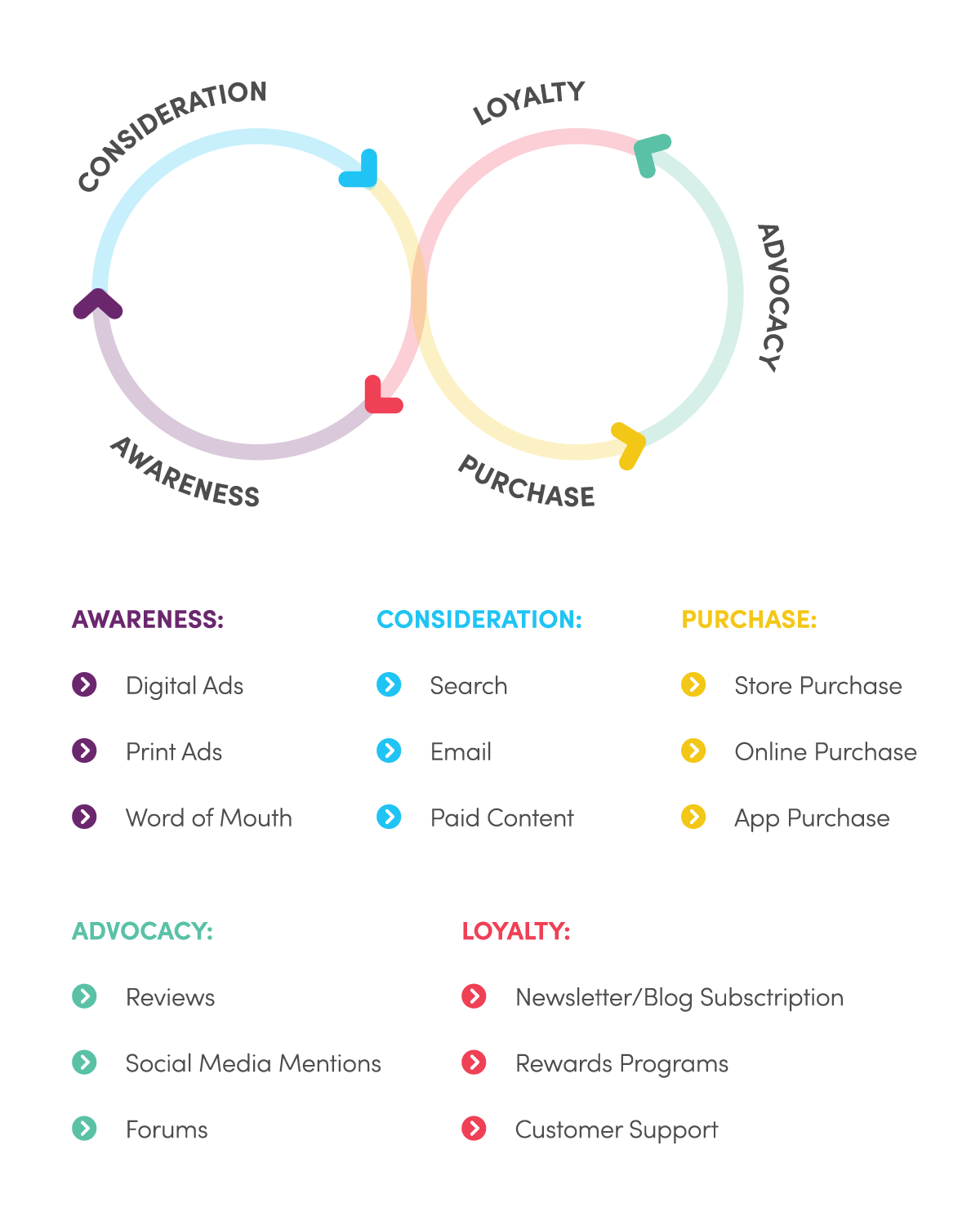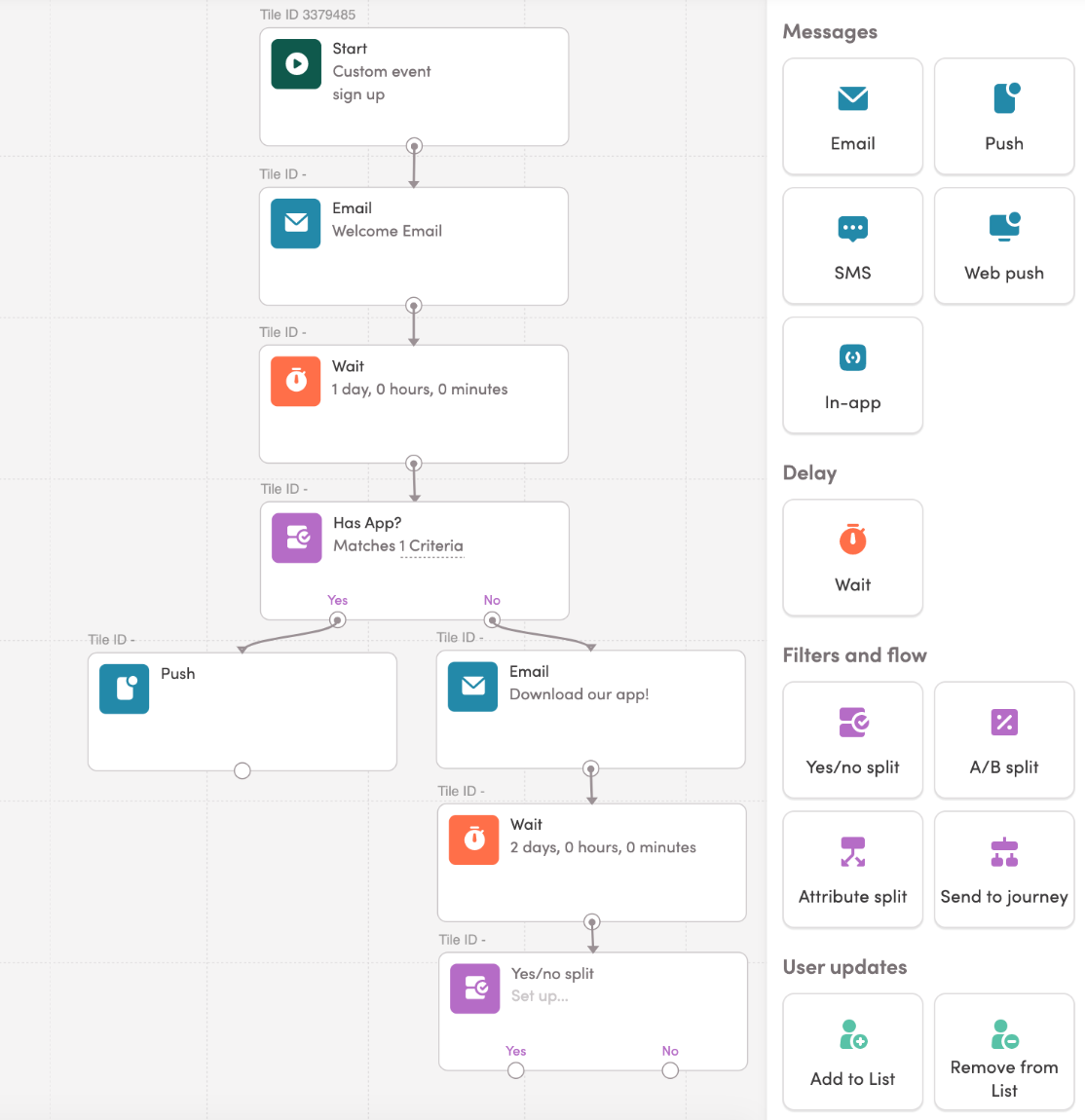Recently, organizations have struggled to fully utilize their marketing investments and, according to a recent Gartner survey, marketers are only utilizing 42% of platform capabilities—a 16% drop in the last two years. In today’s macroeconomic environment it is critical for organizations to realize the benefits in their investments to gain efficiency and enable lean marketing teams to succeed. Here are the steps you can take to maximize your martech investments.
1. Define Goals With a Value Map
Before your marketing team can unlock the full potential of your martech, you need to understand your goals and objectives. Why did you invest in this technology to begin with? One way to do this is by creating a value map.
Think of value mapping as a funnel. Start broad and get more specific.
- Goals: First, define your overarching business goals. What does the company want to achieve broadly?
- Strategies: Then, decide what strategies the company will pursue to achieve those overarching goals. What strategy does the business need to focus on to achieve the goal?
- Initiatives: From the strategy, look at the initiatives that emerge and the tactics that help your team fulfill those initiatives. What initiatives come out of the strategy? What tactics can make those initiatives happen?
- KPIs: Then, look at the key performance indicators (KPIs) that will define success. How can the business measure success?
- Solutions: Lastly, determine what business capabilities, technical capabilities, and solutions are needed to impact those KPIs. What capabilities (business and tech) and solutions exist to enable the tactics? What solution features are necessary for enabling key capabilities?
Value mapping involves a series of steps that will help you measure the financial impact of your business initiatives as well as the investments you need to make to succeed. This should be a collaborative process across the entire organization.
How it Boosts ROI: Value mapping gives you, your team, and your organization an agreed upon north star that keeps everyone going in the same direction, making ROI tracking easier and more tangible.
2. Use Lifecycle Marketing to Keep Customers Engaged
Once you have defined value for your organization you can start to look at how lifecycle marketing delivers joyful experiences. As a refresher, lifecycle marketing revolves around keeping customers engaged with your brand—even after a purchase. Understanding how your customers interact with your brand throughout their entire lifecycle—and beyond—is essential for creating personalized and targeted messaging that resonates with each customer at every stage of their unique journeys.


Understanding the customer lifecycle can help your marketing team prioritize.
Your martech tools should be able to create messages for each customer at every touchpoint as they move through the lifecycle. Better yet, by leveraging your martech stack, you can automate and optimize these marketing efforts, resulting in better engagement, conversion rates, and customer loyalty.
How it Boosts ROI: By using martech tools to address the pain points in the customer lifecycle that need improving, your brand can keep customers engaged and ultimately move them down the funnel.
3. Channel Plan to Help Prioritize Strategies
Lastly, you can get more from your martech tools by channel planning. Channel planning refers to the process of identifying which channels are most effective for reaching a target audience. It involves analyzing different channels, such as email, SMS, MMS, push, in-app, etc. and selecting the ones that are most effective.
The best part? You don’t have to do this manually. By using your martech tools, you can run experiments and A/B tests and, along with collecting zero– and first-party customer data, use the information gathered to determine which channels are the most effective for each individual user and automate future messaging.
How it Boosts ROI: Channel planning can help your team not only understand which channels your martech tools can activate, but on which of those channels your team should be focusing. Time is money—saving your team time can save your team money.
Combining Lifecycle Marketing and Channel Planning
Lifecycle marketing and channel planning can also be combined to increase martech ROI. For example, there are a handful of steps in the customer lifecycle—awareness, consideration, purchase, advocacy and loyalty. Focusing on these stages separately, and channel planning within each stage, can help your team design an effective customer journey to get the most bang for your buck.
When thinking about what channels to use in each stage, think about the benefits of each channel. Take awareness, for example. SMS (Short Message Service) and MMS (Multimedia Messaging Service) are two different types of messaging services that can be used in your onboarding strategy. SMS is a text-only format that supports up to 160 characters. It is suitable for sending brief messages, such as reminders, notifications, and alerts. MMS, on the other hand, is a multimedia format that supports text, images, videos, and audio files. MMS messages can be up to 500 KB in size, and they require a data connection to send and receive.


Here’s an example of a cross-channel customer journey.
So, when deciding between SMS and MMS in the awareness stage, consider the content of your message. If you were only sending a brief text message, like a transactional message, you’d use SMS. But, because awareness messages generally contain more information on the brand, like photos or videos, you’d likely use MMS.
For more information on SMS see our SMS guide HERE.
Increasing the Return on Your Martech Investment
By focusing on value mapping, lifecycle marketing, and channel planning, your marketing team can make the most of your martech tools. Understanding all the capabilities of your marketing platform is critical for creating great customer experiences.
Value mapping, lifecycle marketing, and channel planning work together to bring to life a successful marketing strategy, and when used together, they can improve the customer experience in several ways including improving the consistency in the experience across channels, providing relevant messaging, and understanding the preferred channel across the customer journey to reach your target audience—ultimately having a positive impact on revenue.
To learn more about Iterable’s capabilities and how it can deliver maximum value, schedule a demo today.

































